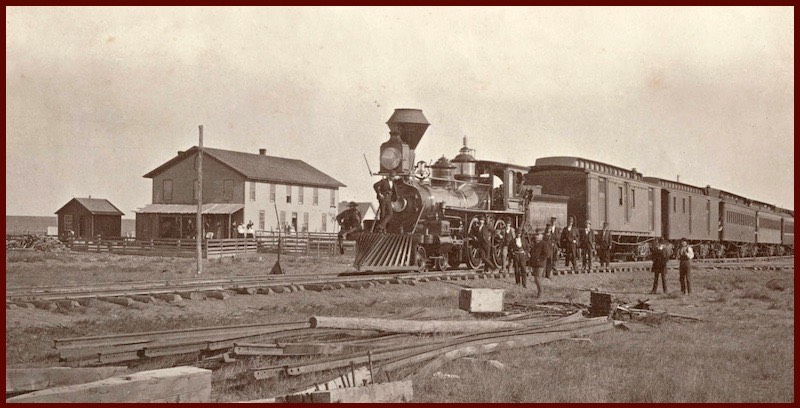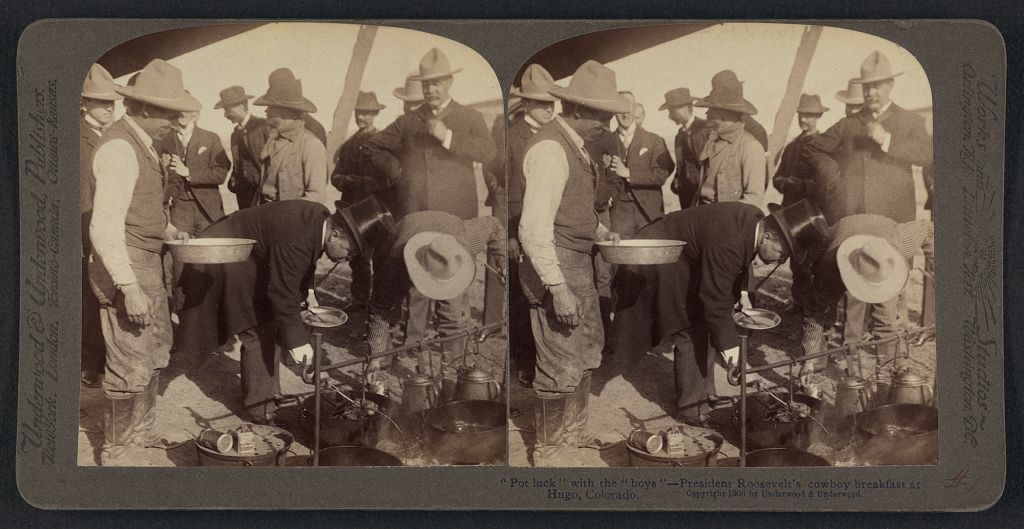Wanting to know more about the little burg where Nettie Lovewell landed in 1880, I typed “Hugo, Colorado” into an Internet search engine and had to smile at one of the returns that popped up, which appears above as the title of this piece. The employment prospect for a single woman living a few miles west of the Kansas border is still fairly bright, according to the page of demographic charts I stumbled upon. A single woman stands to earn well above the state average in Hugo, or about two-thirds as much as the average single male worker.
It was news about how much money a single woman could earn at Hugo in the late 1870’s that brought William Lovewell’s daughter Nettie there in the first place. Her older sister Lizzie was now a widow bringing up two small children back home in eastern Kansas, and Nettie sent the struggling family as much as she could afford out of her pay as a waitress at a hotel near the railroad depot. Apparently there were not many temptations competing for a young woman’s hard-earned dollars in Hugo.
George Kirschbaum’s hotel accounts for over a third of the residents of the little town, and nearly all of his boarders work for the railroad. The 1880 census shows that Hugo has a town butcher, a grocer, a blacksmith, a printer, and, thankfully, a physician, because there is an outbreak of measles for him to deal with. Since the first patient named, a resident of Kirschbaum’s hotel named John W. Williams, is a cook, more cases are to be expected, but there are only a few so far. There are also a couple of cowpunchers in town in the employ of Mr. Frank Cochrane, who raises cattle. Perhaps they are the men Nettie remembered as “cow boys who wandered in once in a while,” frightened her only a bit, and caused no trouble.
By the way, in a family memoir prepared in Lawrence, Kansas, in the 1940’s, Nettie recalled receiving a beautiful silk handkerchief made in China from the hotel’s laundryman. He is noted in the 1880 census as 30-year-old “Jim Lee,” a native of China.

When a train pulled into town in 1873 and a photographer set up his camera to capture one of a series of views he was taking along the Kansas Pacific Railroad that summer, workers at the hotel turned out to gander. You can almost hear the wind moaning across a treeless prairie. Bent rails and other debris that look like evidence of a recent derailment may have been dumped there the previous July when five railroad cars plunged through a flood-damaged bridge east of town, killing five passengers and injuring five more. A sleeping coach containing the injured was parked at Hugo for a time. The rail disaster may have been the only excitement to hit town until 1875 when the Pueblo Chieftain reported that “Frank Collins and Clinton Robbins, hash slingers in an eating house at Hugo, fell out on Thursday and Collins shot Robbins dead.” Perhaps Nettie Lovewell would have been fearful about coming to Hugo if she known more about the town’s past. However, in 1880 the main cause for concern seems to have been measles, and she had already had the measles.
Nettie moved to Lawrence a year later and married Will Lindley. They were the parents of two girls and a boy by 1903, the year Teddy Roosevelt stopped by to enjoy a chuckwagon breakfast with the “boys” back in Hugo. Stereo photography is almost as old as photography itself, and after Oliver Wendell Holmes invented a simple and inexpensive viewer in 1861, a device he refused to patent, it became universally popular, especially for documenting historical subjects. The gimmick of things apparently popping out of a screen toward the viewer seems to get a fresh shot of adrenaline every few decades.
The trick to seeing the two pictures below as one vibrant three-dimensional image without using a special contraption, is to stare between them while focusing your eyes as if viewing something beyond the monitor. There’s a kind of kick to seeing a larger-than-life figure inhabiting 3-dimensional space. And it’s cheaper than a ticket to “Jurassic World.” If you’re not a well-paid single person, you have to cut corners somewhere.
You’re welcome.

Kansas Pacific Photo Courtesy Southern Methodist University, Central University Libraries, DeGolyer Library
"Pot luck" with the "boys" - President Roosevelt's cowboy breakfast at Hugo, Colorado Courtesy Library of Congress